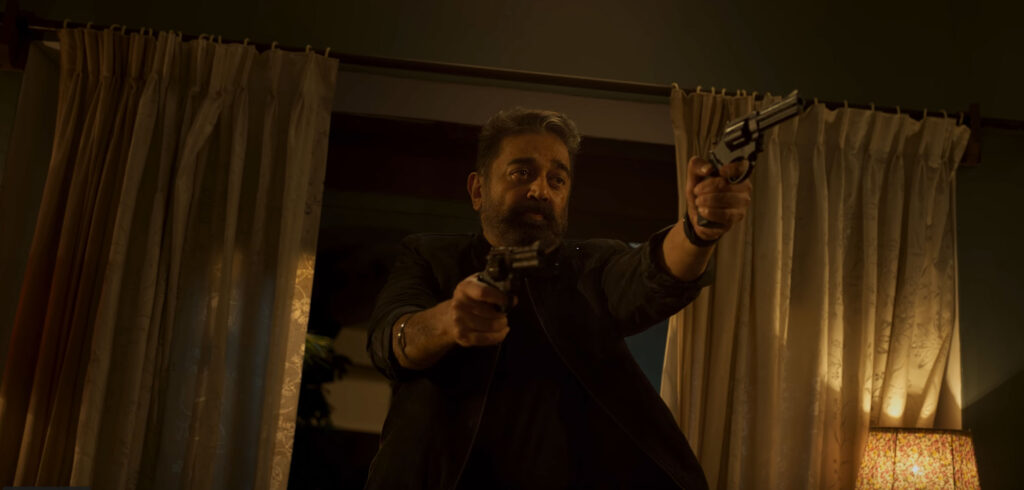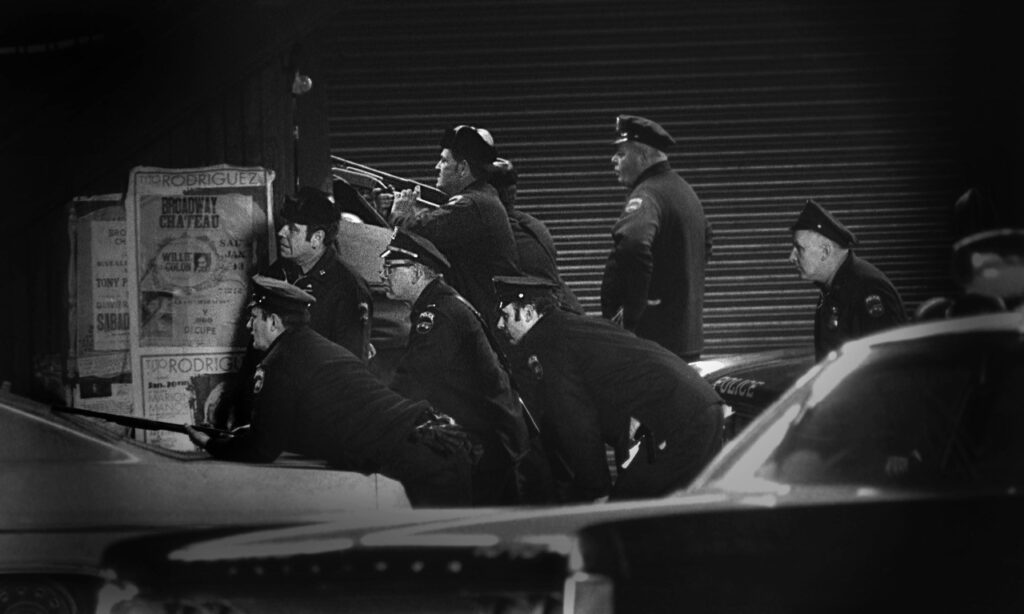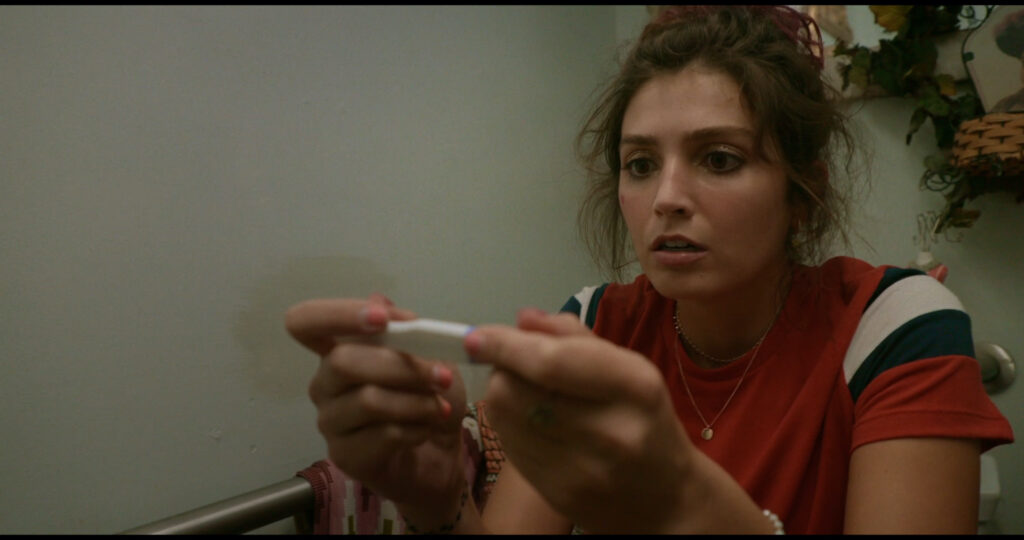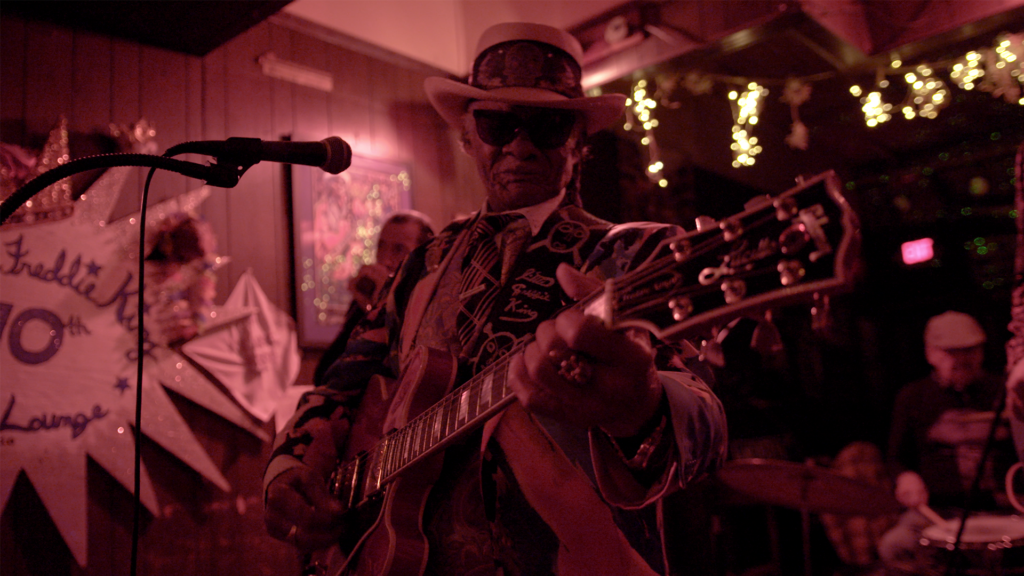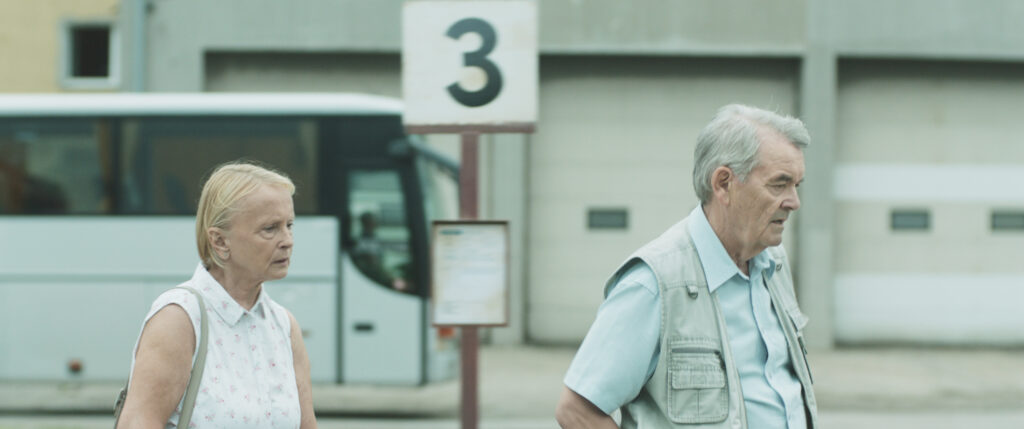July 5, 2022
by Carla Hay

Directed by Charline Bourgeois Tacquet
French with subtitles
Culture Representation: Taking place in Paris and in Brittany, France, the comedy/drama film “Anaïs in Love” features a nearly all-white cast of characters (with a few Asians) representing the working-class, middle-class and wealthy.
Culture Clash: A 30-year-old graduate student, who has a history of avoiding long-term commitments, gets involved in a love triangle where she seduces a much-older man and his live-in lover.
Culture Audience: “Anaïs in Love” will appeal primarily to people who are interested in movies about people who have messy and complicated relationships.

The title character of “Anaïs in Love” blurs the lines between being a free spirit and being a selfish flake. Whether or not viewers will like her or dislike her, Anaïs keeps people interested in seeing what she’ll do next. In this comedy/drama, 30-year-old graduate student Anaïs (played by Anaïs Demoustier) is someone who’s still got a lot of growing up to do, but her childlike playfulness is a huge reason why people are attracted to her. It’s a dichotomy that is entirely realistic to the way many people are, but it leads to a very messy personal life.
In other words, don’t expect “Anaïs in Love,” which takes place in France, to be a conventional movie about romance. “Anaïs in Love” (which had its world premiere at the 2021 Cannes Film Festival) is also a reflection of French culture, which tends to have more lenient views than American culture about open relationships, infidelity and non-monogamy. Not too many American filmmakers would want to make a movie about a young American woman who does what Anaïs does in her pursuit of love and sexual relationships.
Charline Bourgeois-Tacquet wrote and directed “Anaïs in Love” almost like an observational portrait of Anaïs, to show without judgment how Anaïs is living her life within a certain period of time. The movie takes place over the course of about one year. In the beginning of the movie, Anaïs is working on her thesis, she’s struggling financially, and the rest of her life is in a state of flux.
The opening scene shows Anaïs restlessly fluttering around her Paris apartment while her patient but frustrated middle-aged landlord (played by Marie-Armelle Deguy) is in the apartment and trying to find out when Anaïs will be paying her rent. Anaïs is two months behind on her rent, and she’s currently unemployed, but she tells the landlord that she’s getting unemployment benefits and might be getting a job with her thesis supervisor. After a few minutes of Anaïs avoiding the subject of paying the rent, it becomes obvious that Anaïs is one of the people who talks quickly with a big smile on her face, pretending that everything is okay, when everything is not fine at all.
In between rambling about things other than when she’ll have the rent money, Anaïs tells the landlord that she and her boyfriend Raoul have recently made a change in their relationship. Raoul used to live with Anaïs and helped pay the rent, but now he has moved out for reasons that Anaïs won’t tell the landlord. All that Anaïs will say is: “Raoul and I haven’t really parted. We just don’t live together right now.” Later, viewers find out that the landlord’s son knows Raoul.
As a distraction, Anaïs quickly changes the subject to talk about the landlord’s love life. “How do manage, after centuries with your husband?” Anaïs adds, “Do you think I have a problem? That I don’t know how to love? If I was in love, really in love, I’d be happy to see the other person every day, morning, noon and night.”
And then Anaïs asks the landlord if it’s “normal” to want to sleep in the same bed for years with the same person. The landlord, who is visibly uncomfortable with where this conversation is going, says to Anaïs: “There is no normal. We do what we can with what we are.”
Keep in mind that all the landlord wanted to do was find out when Anaïs would have the rent that she owes. Instead, Anaïs bombards the landlord with a lot of personal information about herself and a lot of borderline intrusive questions about the landlord. After a while, viewers will notice that Anaïs has a tendency to “overshare” about her personal life with people she barely knows, so she asks questions with no tact when expecting other people to “overshare” with her.
It’s the first clue that Anaïs doesn’t really care about personal boundaries. She says whatever is on her mind, even if she sees that it causes discomfort to other people. Over time, viewers will see that Anaïs applies this attitude to anyone she finds sexually attractive. She will express that attraction to them, regardless if that person is in a committed relationship or not. When she wants to start a sexual relationship with someone, she doesn’t really care if it might hurt other people.
Anaïs is also one of those people who always seems to be running late. People who are chronically tardy often can be considered irresponsible, but many people who have a bad habit of being late also tend to be narcissists who don’t respect other people’s time. They often like the idea that when they show up somewhere, they might have kept people waiting. People who usually show up late also want to give the impression that their lives are so busy, they’re doing people a “favor” by spending time with them.
One evening, Anaïs goes to a cocktail party in an upscale apartment, where she doesn’t really know anyone, but she’s at this party out of obligation to her parents, who know the party hosts. Most of the people at this somewhat stuffy party are at least 25 years older than Anaïs. One of the party guests is a book publisher named Daniel Moreau-Babin (played by Denis Podalydès), who is a 58-year-old divorced father of an adult son.
Anaïs and Daniel first see each other in the elevator on the way to the party. And when they’re inside the party, Daniel and Anaïs start a conversation with each other. It turns out that Anaïs and Daniel are indirectly connected. Anaïs’ younger brother Balthazar (played by Xavier Guelfi) is engaged to a woman named Rebecca, who attended the same college as Anaïs. Daniel is the book publisher for Rebecca’s father, who is an author.
Daniel mentions that the spouses who are hosting the party have downsized to this apartment, after living in a big house for years. Anaïs says that there’s no such thing as having a house that’s too big. This domestic arrangement leads Daniel to talk about his personal life. Daniel tells Anaïs that he and his ex-wife were married for 12 years until he decided to break up with her because he felt he outgrew the marriage.
Daniel has been living with a 56-year-old successful writer named Emilie Ducret (played by Valeria Bruni Tedeschi) for the past 12 years, but he says their relationship has now gotten too routine and stale for him. Daniel wonders aloud to Anaïs if 12 years is the maximum length of time that he can be in a committed relationship. He tells Anaïs all of this personal information while looking at her in a way that makes it obvious that he’s attracted to her.
Anaïs picks up on the attraction right way. And so, it should come as no surprise to viewers that the next time that Anaïs sees Daniel, it’s for a secret tryst at his apartment, where they have sex for the first time. It’s obvious why Daniel is interested in hooking up with a younger woman who’s pretty, but what is Anaïs getting out of this sexual relationship? Apparently, she’s having sex with Daniel just because she feels like she can.
But what about Anaïs’ boyfriend Raoul (played by Christophe Montenez), who is close to Anaïs’ age? What is he all about? Raoul says he loves Anaïs, but he remains somewhat of a mystery to viewers. Don’t expect much insight into what the relationship between Anaïs and Raoul was like before he moved out of their apartment.
Anaïs doesn’t tell Raoul that she’s sleeping with another man, but she does tell Raoul a secret that she’s been hiding for weeks. It’s the most obvious life-changing secret that a woman can keep from a man she’s had sex with but isn’t sure how he’ll react if he finds out the secret. Raoul’s reaction to this secret is a turning point in his relationship with Anaïs.
Anaïs and Daniel continue their clandestine affair. Over time, Anaïs sometimes acts very jealous and possessive, as if she wants more of a commitment from Daniel that he’s not willing to give to her. Daniel sometimes call Emilie his “wife,” but he and Emilie are not legally married and are in a common-law spousal situation.
Anaïs doesn’t seem to think too much about Emilie (who doesn’t know about the affair), until Anaïs meets Emilie by chance on a street. When Anaïs approaches Emilie out of curiosity, she pretends to be fan of Emilie’s novels and compliments her effusively. Emilie is polite but seems to be a little distracted because she says she’s on her way to an appointment. What catches Anaïs off-guard is how much she’s attracted to Emilie.
After this random encounter, Anaïs starts to become more interested in finding out about Emilie. She begins reading Emilie’s novels and finds an emotional connection to Emilie through Emilie’s writing. Later, Anaïs finds out that Emilie has decided to go out of her comfort zone as a novelist to adapt an opera called “Knight of the Rose” into a theatrical stage play, because Emilie needs the money. Anaïs’ attraction to and interest in Emilie seems to grow as Daniel and Anaïs quarrel even more, because he’s unwilling to tell her if he will leave Emilie to be with Anaïs.
It leads to a part of the story that is probably the most divisive thing about the movie. Anaïs finds out that Emilie will be a guest speaker at a writers’ retreat in Brittany. And so, Anaïs decides to go to this retreat too (even though she can’t afford it), with the intention of possibly seducing Emilie. It’s basically stalking, but don’t tell Anaïs that, because she thinks it’s a romantic gesture.
Anaïs’ intentions are also very manipulative, because even though she doesn’t tell Daniel about her plans to seduce Emilie, any adult with life experience can see that Anaïs has an ulterior motive of wanting to make Daniel jealous. Anaïs knows that Daniel will eventually find out that Anaïs wants to have a sexual relationship with Emilie. He already seems to sense it because of the way Anaïs has been recently been asking him a lot of personal questions about Emilie.
“Anaïs in Love” is somewhat scatterbrained and unfocused, just like Anaïs, because there’s a subplot to the movie about Anaïs’ family that doesn’t flow as well with the main story. Before going to Brittany, Anaïs spends some time with her brother Balthazar, who has a pet lemur named Gilbert, which provides some comic relief. The main purpose of Anaïs’ scenes with Balthazar is to show that Anaïs feels somewhat insecure that her younger brother has a more stable life than she does.
In a more serious part of the movie, Anaïs visits her happily married parents (played by Anne Canovas and Bruno Todeschini), who tell her some devastating news. Anaïs’ parents are briefly in the movie, but it’s enough time for viewers to see that Anaïs is insecure about being considered a “disappointment” to her parents for not really committing to any job or relationship. Anaïs’ way of coping with this self-esteem issue is to lean into the image that she’s a “free spirit,” even though her arguments with Daniel suggest that she wants more commitment in her life than she’s willing to admit to other people.
But does Anaïs really want a long-term commitment with anyone? Or does she just like the challenge of getting someone who is “hard to get”? Those questions can also apply to Anaïs’ intentions of getting closer to Emilie. Observant viewers can see that Anaïs doesn’t have any close friends. It’s easy to speculate that it’s because she’s wrecked a lot of friendships with her pattern of being a participant in infidelity.
The movie uses Anaïs’ financial problems for some comedic scenes. To help pay for her trip to Brittany, Anaïs rents out her apartment to a vacationing couple (played by Seong-Young Kim and Estelle Cheon), whose native language is Korean and whose knowledge of French is limited. Just like she does with a lot of people she first meets, Anaïs “overshares” by telling too much personal information when she shows the couple her apartment and they decide to rent it. You can bet that something will go wrong in the apartment while Anaïs is too far away to do anything about it.
Anaïs still doesn’t have enough money to go to the retreat for the entire duration. She’s about to get kicked out of the retreat, but she talks her way into staying by offering to do free cleaning and upkeep work on the property to make up for the portion of the retreat fee that she can’t pay. A handyman named Yoann (played by Jean-Charles Clichet), who’s an aspiring playwright, is assigned to be her supervisor. There are a few comedic scenes where Anaïs tries to spend alone time with Emilie while Anaïs hides from Yoann to avoid doing the work she promised.
When it comes to looking for love and sex, Anaïs can be whimsically charming but also frustratingly self-absorbed. A lot of viewers will be turned off by Anaïs’ nonchalant way of disrupting relationships to satisfy her own personal needs. The movie doesn’t try to excuse this awfulness but merely points out that heartbreakers like Anaïs exist in the world. In Brittany’s romantic countryside and beach setting, Emilie’s reaction to Anaïs’ seductive charisma is not surprising at all.
It’s to the credit of writer/director Bourgeois-Tacquet that she doesn’t present Anaïs as a hero or as a villain but as a flawed human being who doesn’t always make the best decisions for herself and ends up hurting other people in the name of “love.” Demoustier, Bruni Tedeschi and Podalydès portray the three people in this love triangle with considerable skill. These three people are presented with options, when it comes to love and sex. However, “Anaïs in Love” asks these provocative questions: “How much of this love and sex really makes them happy? And how long will that happiness last?”
Magnolia Pictures released “Anaïs in Love” in select U.S. cinemas on April 29, 2022. The movie was released on digital and VOD on May 6, 2022.

